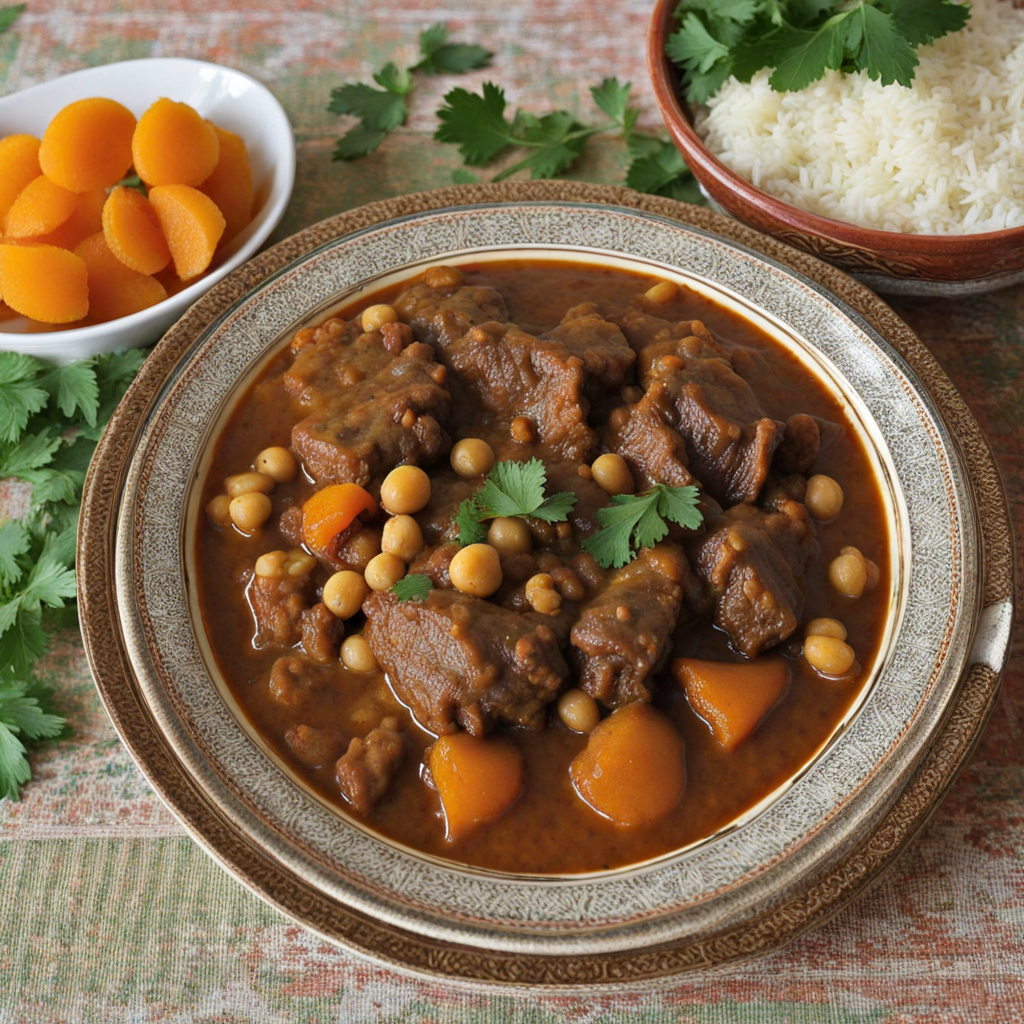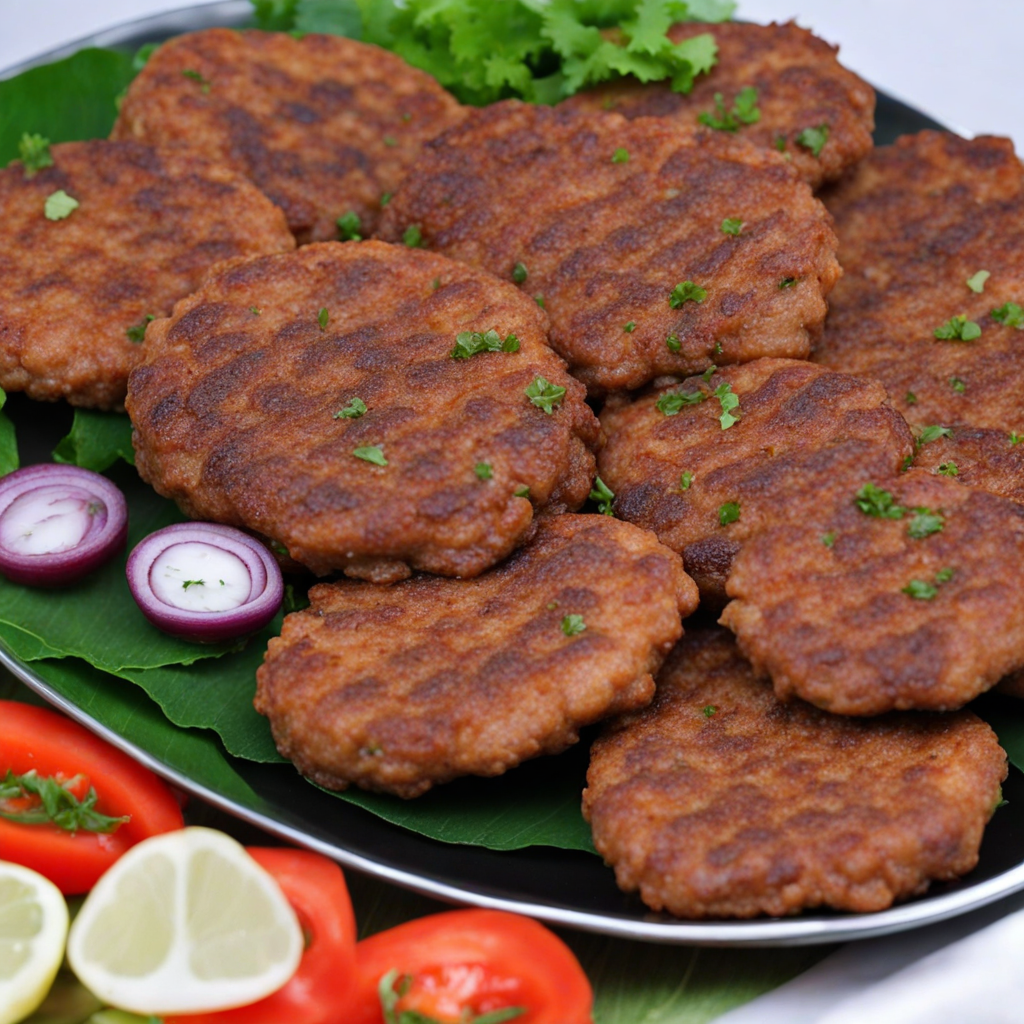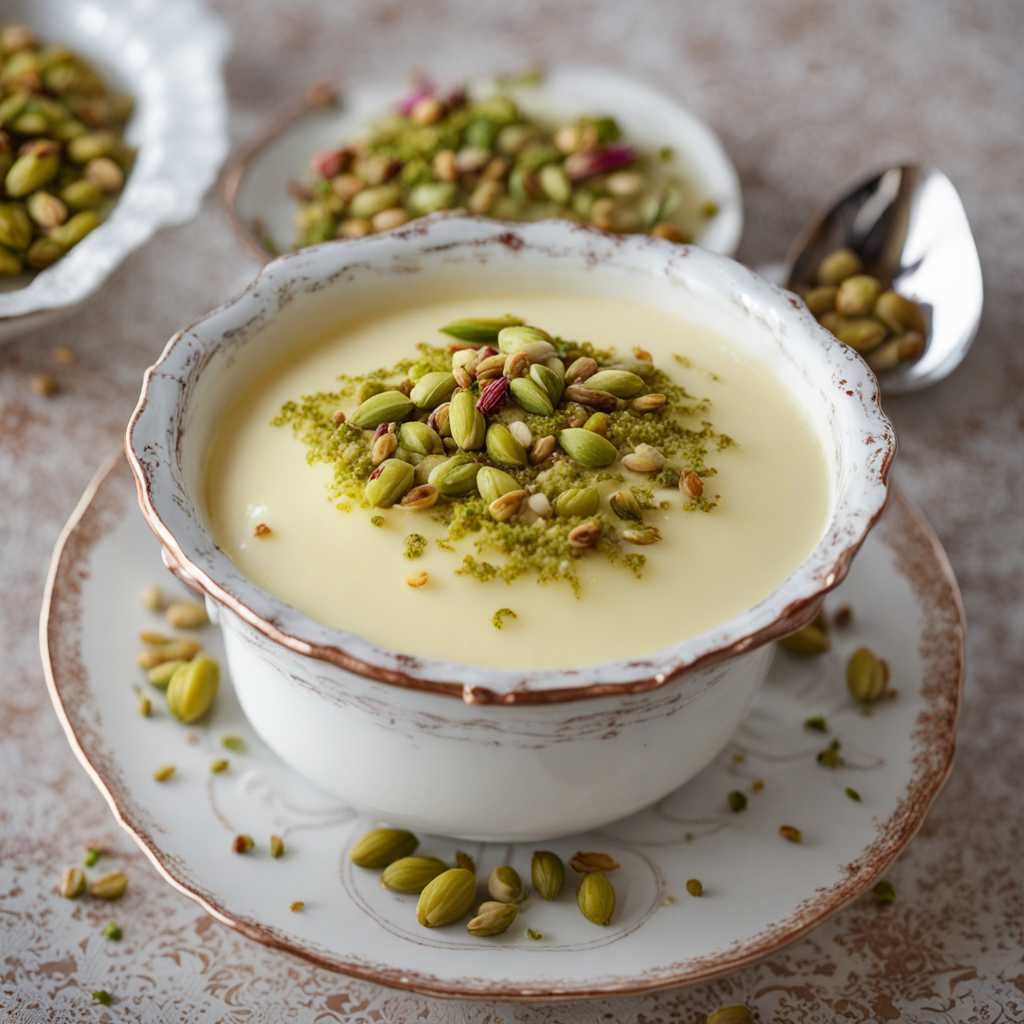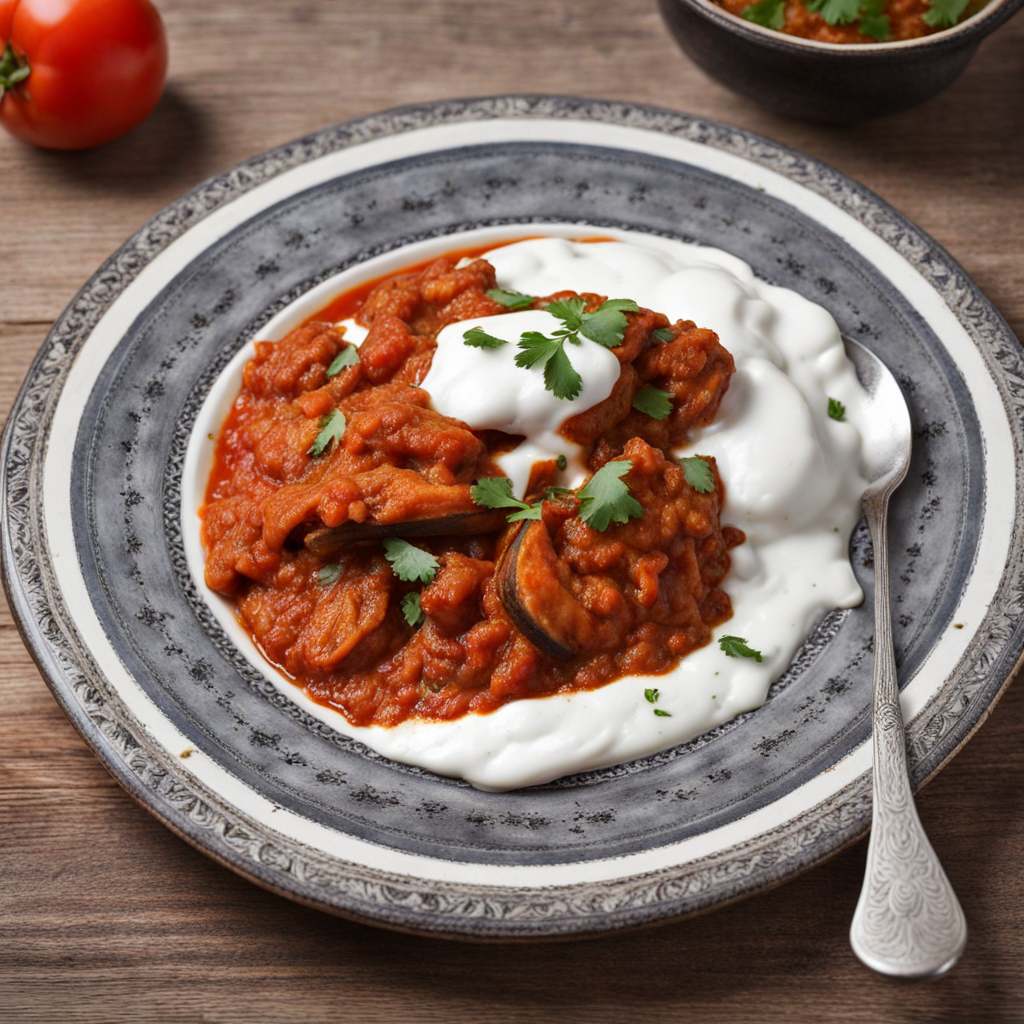Qorma Alou-Bokhara wa Dalnakhod
قورمه آلو بخارا و دالنخود, or Qorma-e Alu Bokhara wa Dal-e-Nokhod, is a traditional Afghan dish that beautifully combines the rich culinary heritage of Afghanistan with the vibrant flavors of its local ingredients. This dish is a delightful stew that features tender pieces of meat, dried plums (alu bokhara), and chickpeas (dal-e-nokhod), creating a harmonious blend of sweetness, tanginess, and heartiness. The history of this dish can be traced back to the diverse cultural influences that have shaped Afghan cuisine over centuries. Afghanistan's strategic location along the Silk Road has allowed it to absorb culinary techniques and ingredients from neighboring regions, including Persia, Central Asia, and the Indian subcontinent. The use of dried fruits in savory dishes is a hallmark of Afghan cooking, reflecting the historical importance of trade routes that brought various spices and ingredients into the region. Qorma-e Alu Bokhara wa Dal-e-Nokhod is a perfect representation of this cultural tapestry, showcasing the unique flavors and cooking methods passed down through generations. In terms of flavor, this dish is a delightful amalgamation of savory and sweet. The tender meat, usually lamb or beef, is slow-cooked to perfection, allowing it to absorb the rich spices and the sweetness of the dried plums. The alu bokhara adds a distinct tartness, balancing the rich meatiness of the stew. The chickpeas contribute an earthy, nutty flavor and a creamy texture,
How It Became This Dish
Origin of قورمه آلو بخارا و دالنخود The dish قورمه آلو بخارا و دالنخود, commonly known as "Qorma Aloo Bukhara wa Dal Nakhod," is a traditional Afghan stew that showcases the rich culinary heritage of Afghanistan. Its origins can be traced back to the Persian influence on Afghan cuisine, which has been shaped by centuries of trade, conquest, and cultural exchange across Central Asia. The use of dried fruits, spices, and legumes in this dish reflects the agricultural practices and climate of the region, where pomegranates, apricots, and various beans flourish. The term "قورمه" (Qorma) refers to a type of stew made with meat, while "آلو بخارا" (Aloo Bukhara) refers to dried plums, and "دالنخود" (Dal Nakhod) represents chickpeas. The combination of these ingredients not only provides a delightful medley of flavors and textures but also illustrates the importance of seasonal produce in Afghan cooking. The dish is often prepared during special occasions and gatherings, symbolizing hospitality and the warmth of Afghan culture. Cultural Significance In Afghan society, food plays a pivotal role in social interactions and cultural expressions. قورمه آلو بخارا و دالنخود is more than just a dish; it embodies the values of family, community, and tradition. When served at gatherings such as weddings, Eid celebrations, or family reunions, it brings people together around a shared table, reinforcing bonds and creating lasting memories. The preparation of this dish is often a communal affair. Family members come together to chop vegetables, soak chickpeas, and prepare the meat, which fosters a sense of unity and teamwork. The act of cooking itself becomes a ritual, passed down through generations, where younger members learn the art of making this cherished dish from their elders. In this way, the culinary skills associated with قورمه آلو بخارا و دالنخود become a part of the family's cultural identity and heritage. Ingredients and Preparation The preparation of قورمه آلو بخارا و دالنخود involves a harmonious blend of ingredients, each contributing unique flavors and nutritional value. Typically, lamb or beef is used as the primary protein, providing a hearty base for the stew. The meat is sautéed with onions and garlic, releasing aromatic flavors that set the stage for the dish. One of the distinguishing features of this stew is the use of dried plums, known as "آلو بخارا." These plums add a delightful sweetness and tartness to the dish, balancing the savory notes of the meat and spices. The dried fruit is often simmered with the stew, allowing its flavors to infuse the broth, creating a rich and complex taste. Chickpeas, or "دالنخود," are also a key component of this dish. They are soaked in water before cooking, which softens them and allows them to absorb the flavors of the stew. Chickpeas not only add protein but also provide a creamy texture that complements the other ingredients. Additionally, spices such as turmeric, cumin, and coriander are essential, as they enhance the stew's aroma and taste, reflecting the spice trade that has historically influenced Afghan cuisine. Regional Variations As with many traditional dishes, قورمه آلو بخارا و دالنخود has regional variations that reflect local tastes and available ingredients. In urban centers like Kabul, the dish may be prepared with a more refined approach, incorporating additional spices and garnishes such as fresh herbs or nuts. In contrast, rural areas might favor simpler preparations based on traditional practices, relying on the staples of their land. The use of different meats can also vary regionally; while lamb is commonly preferred, some communities may use goat or even chicken based on personal preferences or availability. Seasonal variations in vegetables and fruits can also influence the dish, with fresh produce being prioritized during harvest times. These adaptations highlight the versatility of the dish and how it can evolve while still retaining its core identity. Modern-Day Relevance and Revival In recent years, there has been a resurgence of interest in traditional Afghan cuisine, including dishes like قورمه آلو بخارا و دالنخود. This revival can be attributed to the Afghan diaspora, which has spread across the globe, bringing their culinary heritage with them. Afghan restaurants in cities worldwide offer authentic interpretations of this dish, allowing people from diverse backgrounds to experience its unique flavors. Moreover, culinary enthusiasts and food bloggers have begun to explore and document Afghan cuisine, ensuring that recipes for traditional dishes like قورمه آلو بخارا و دالنخود are preserved for future generations. This renewed focus on heritage foods has not only promoted cultural awareness but has also encouraged a broader appreciation of Afghan culinary traditions. As people seek comfort in home-cooked meals, the warmth and heartiness of قورمه آلو بخارا و دالنخود offer a sense of nostalgia and belonging. Families are increasingly turning to their roots, seeking to recreate the flavors of their childhood or to explore their cultural heritage through food. In this way, the dish continues to serve as a bridge between generations, linking the past with the present. Conclusion In conclusion, قورمه آلو بخارا و دالنخود is a testament to the rich culinary history of Afghanistan, blending flavors, traditions, and cultural significance into a single dish. Its origins reflect a confluence of influences, while its preparation and enjoyment illustrate the values of community and family. As this traditional stew finds its place in the modern culinary landscape, it remains a cherished part of Afghan heritage, continuing to bring people together around the dinner table. The evolution of قورمه آلو بخارا و دالنخود is a reminder of the power of food to connect us to our roots and to one another, transcending borders and generations.
You may like
Discover local flavors from Afghanistan







